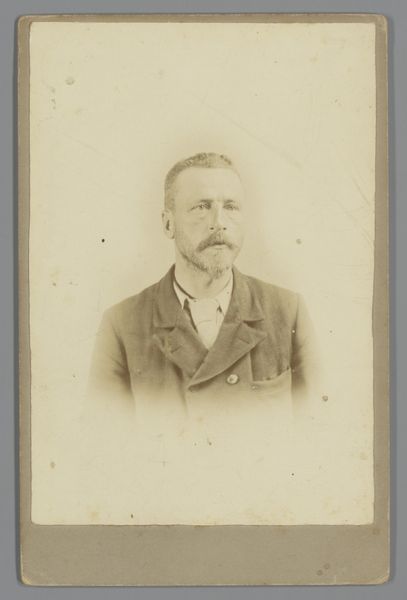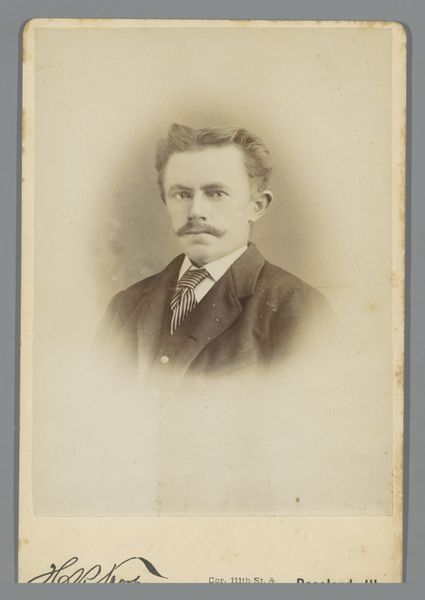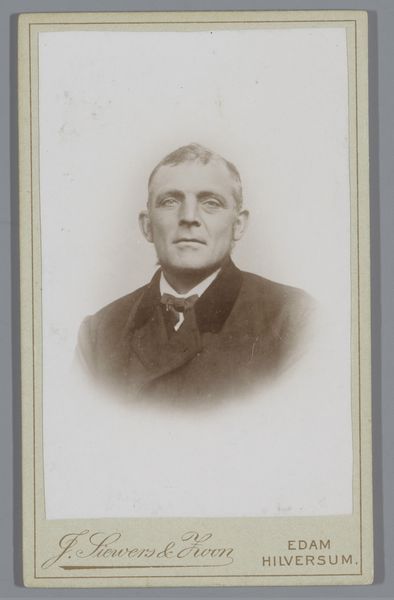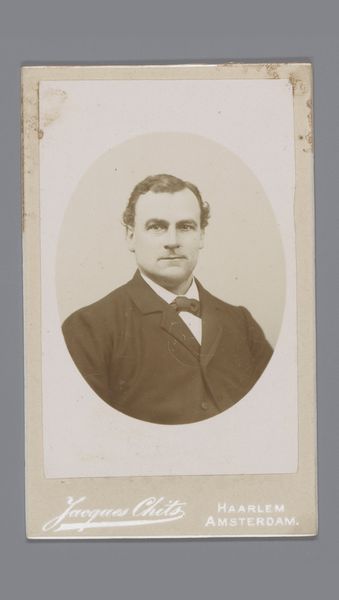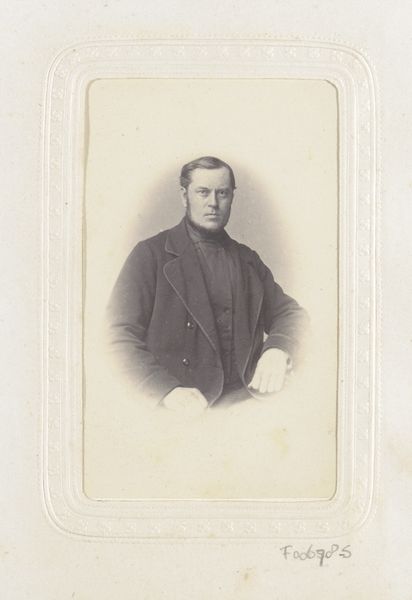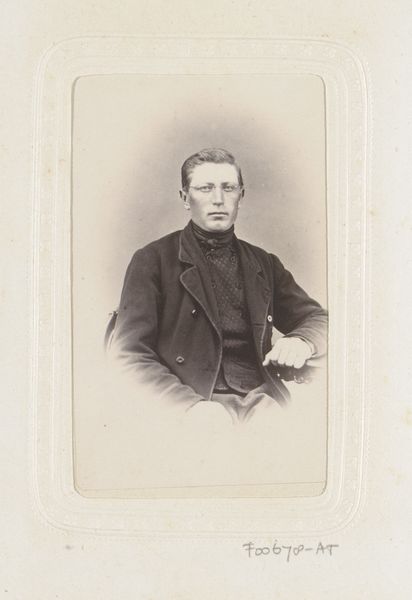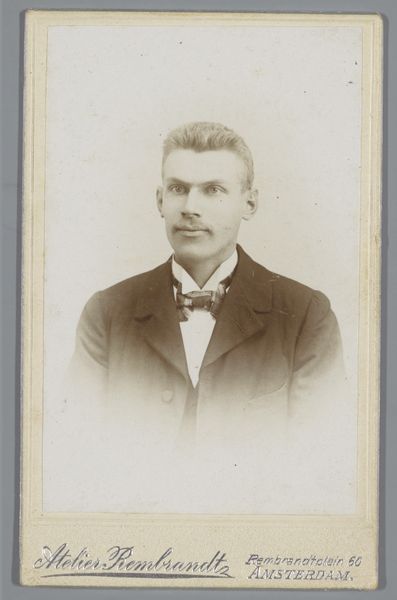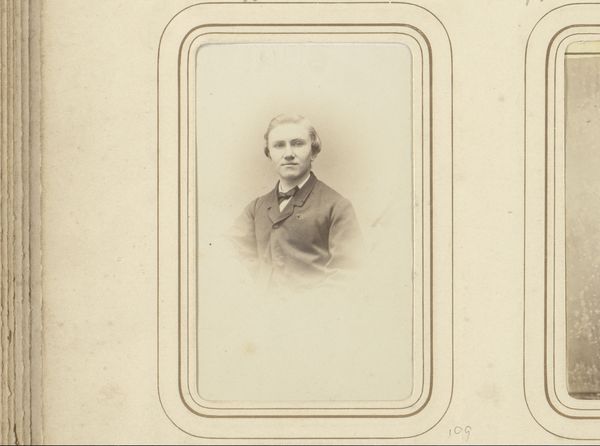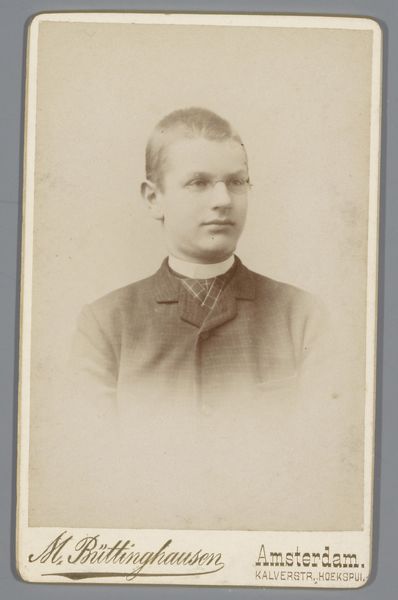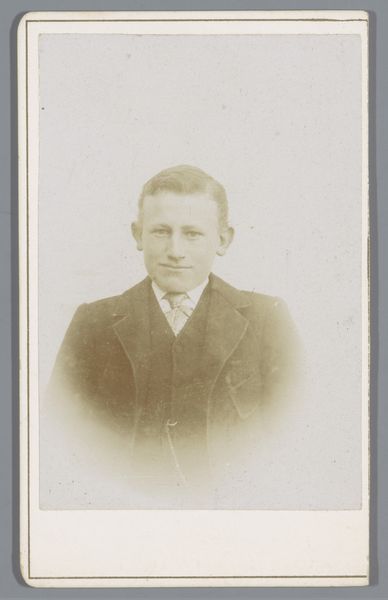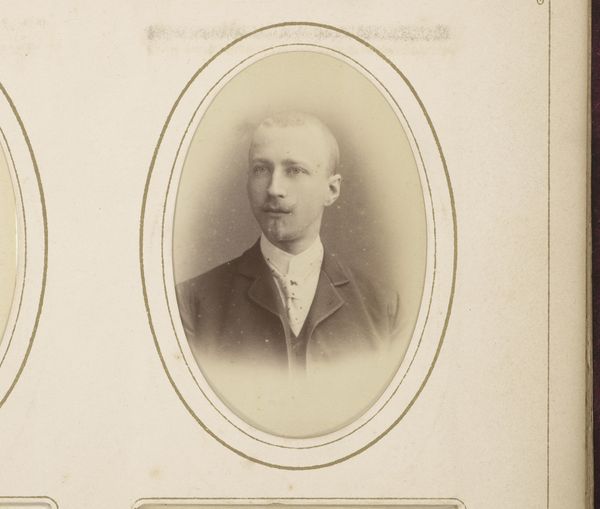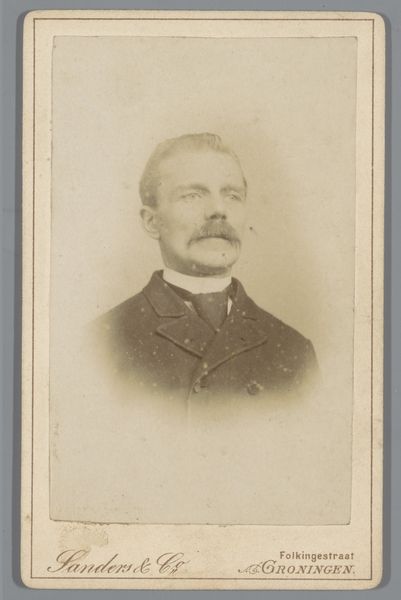
photography
#
portrait
#
photography
#
realism
Dimensions: height 105 mm, width 64 mm
Copyright: Rijks Museum: Open Domain
This photographic portrait of William Higleth was produced by the London Stereoscopic Company, though the exact date of its making is unknown. The image is printed on albumen paper, a process that involves coating paper with a layer of egg white to create a smooth surface. This technique, while appearing straightforward, was labor-intensive, demanding skill in preparing the solution, coating the paper, and sensitizing it with silver nitrate. Each step required precision to achieve the desired clarity and tonal range, making it a highly specialized form of labor. The albumen process, as it gained prominence, reflected the rise of consumer culture and industrial capitalism. Studios like the London Stereoscopic Company streamlined production and transformed photography into a commercial enterprise. The photograph served as a commodity but also a status symbol, indicative of Higleth's place in a rapidly industrializing society. Paying attention to materials and processes highlights the social and cultural implications of artistic production. The photograph is not merely an image but a material object imbued with the histories of labor, technology, and societal values.
Comments
No comments
Be the first to comment and join the conversation on the ultimate creative platform.
